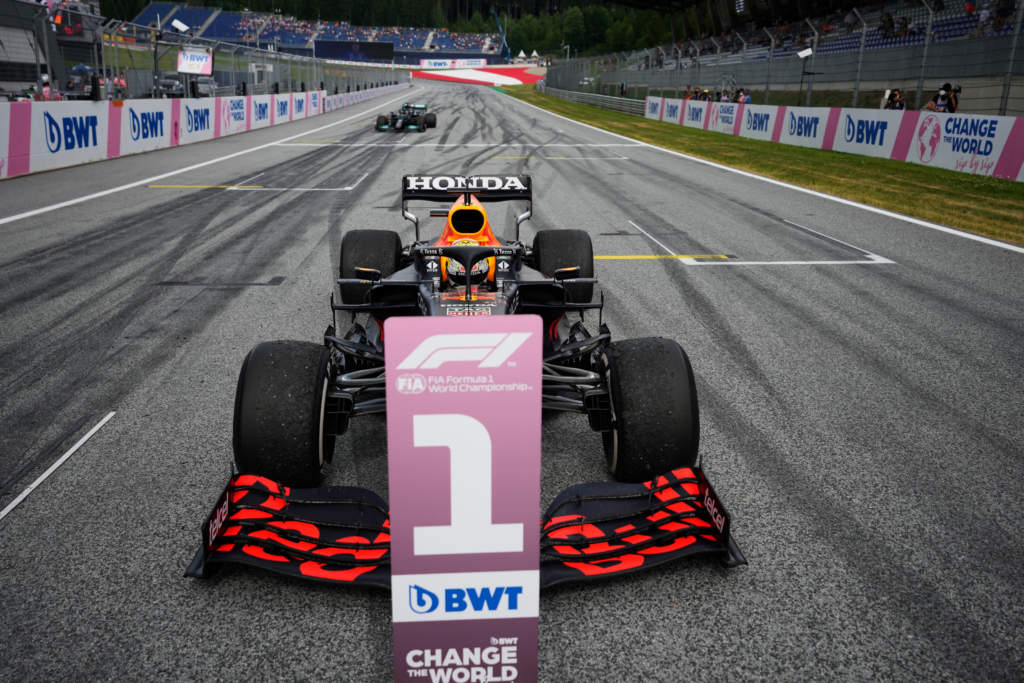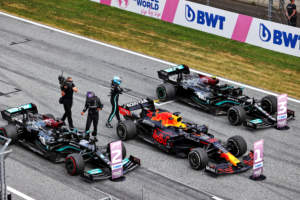Up Next

“They’re just faster,” summarised Lewis Hamilton of Max Verstappen and Red Bull after the latter delivered another dominant performance at the Styrian Grand Prix.
“We need an upgrade of some sort,” continued Hamilton, who’d been 17 seconds behind before pitting near the end for a new set of tyres on which to at least take the point for fastest lap. “They’ve obviously made some big improvements in the last couple of races, I don’t know where we’re losing all that time.”
There were five trucks’-worth of new parts delivered to Red Bull this weekend. New front wings to try and a new floor and diffuser which was raced. Red Bull and Honda are hell-bent on winning this title and have a robust development plan in simulation and production. These are the fruits if that effort.
How much of an opportunity cost will that have upon next year’s car? Well, after seven years straight of defeat by Mercedes, it would be understandable if there was an element of ‘let’s cross that bridge when we come to it’ about this year’s campaign.
In a different era Verstappen might have won by half a lap
Toto Wolff essentially confirmed there’d be no major developments on the Mercedes for the balance of this season, that’s it’s all about 2022 for his team. Essentially, it is now just hanging on and hoping different track layouts may come to its rescue enough times to still make a fight of it.
It was only four races ago that Mercedes soundly defeated Red Bull at Barcelona through superior rear tyre degradation. The Red Bull Ring was the track where that demand would be repeated.
That and the barn door rear wing Mercedes fitted should have at least given it better rear tyre degradation than the Red Bull even if it was losing 0.25s per lap to it down the straights. Yet it didn’t even have that.
Verstappen’s pace advantage was such that he didn’t even need to push that hard, not once he’d pulled out an undercut gap of almost 3s in the first 10 laps.
There wasn’t a single complicating factor in Verstappen’s victory drive, save for a concern about an occasional randomly-timed long brake pedal (it was pad knock-off as he braked on the kerbs going into the final turn). The two title combatants took themselves out of everyone’s reach right from the start – partly through a feisty Lando Norris initially delaying the faster cars of Sergio Perez and Valtteri Bottas.
The rears were going to heat-degrade a little but not to a strategy-altering degree. Once Verstappen had that undercut-defending cushion over Hamilton, he’d just monitor his energies.
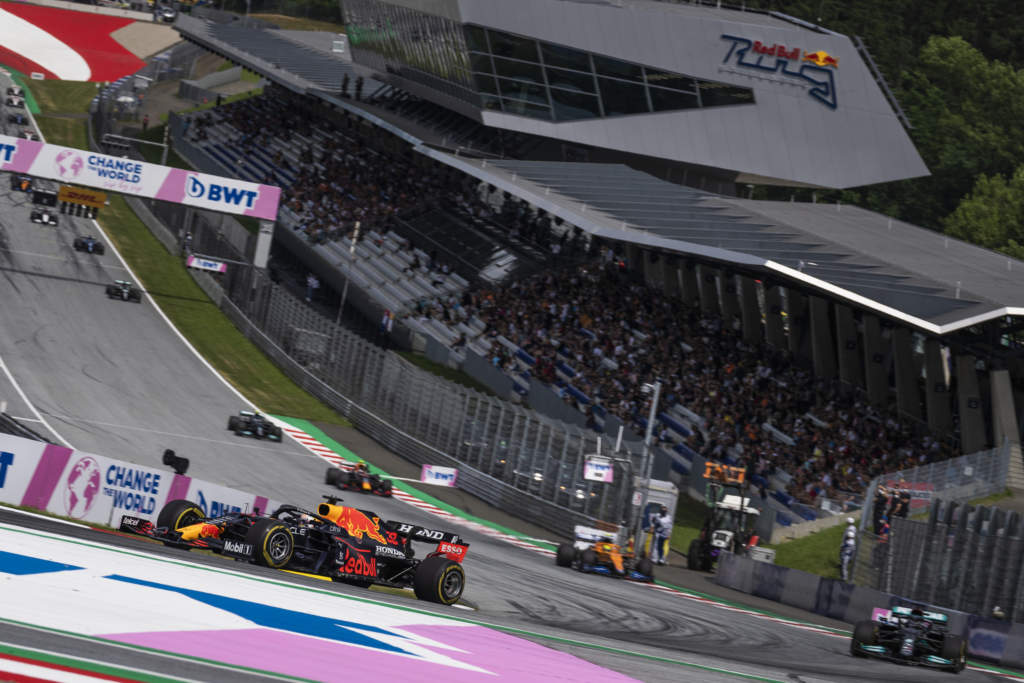
Having started – like both Mercedes – on the robust mediums (the C3s this weekend), he could go as long as the others dictated. There was no need to risk, there were no ambiguous strategy calls to make. That’s what a raw performance advantage buys you. That’s how a faster car’s race plays out in the modern era.
“We were flat-out,” said Hamilton. “Then you have to apply some management and then you’re even further off. I think Max was able to manage his pace and still be pulling away.”
In a different era he might have won by half a lap.
Being stuck behind Norris’s slower but immaculately-driven McLaren for nine and 10 laps put Perez and Bottas 13-15s behind by the time they were third and fourth respectively.
Perez had started on the softs, without the qualifying pace to have risked mediums (which were around 0.5s slower over a quali lap) and so was nursing the tyres. Bottas was following on a couple of seconds behind, his pace dictated by that of Perez.
Which meant that by as early as the 18th lap, Verstappen had a pit stop’s-worth of gap over Bottas – and his gap over Hamilton was out to over 4s. Within those circumstances there was no sliver of opportunity for Hamilton.
Barring random developments, Verstappen had this race won already. That’s how it played out, with just that flourish of Hamilton’s new-tyred fastest lap right at the end to limit the damage by one point.
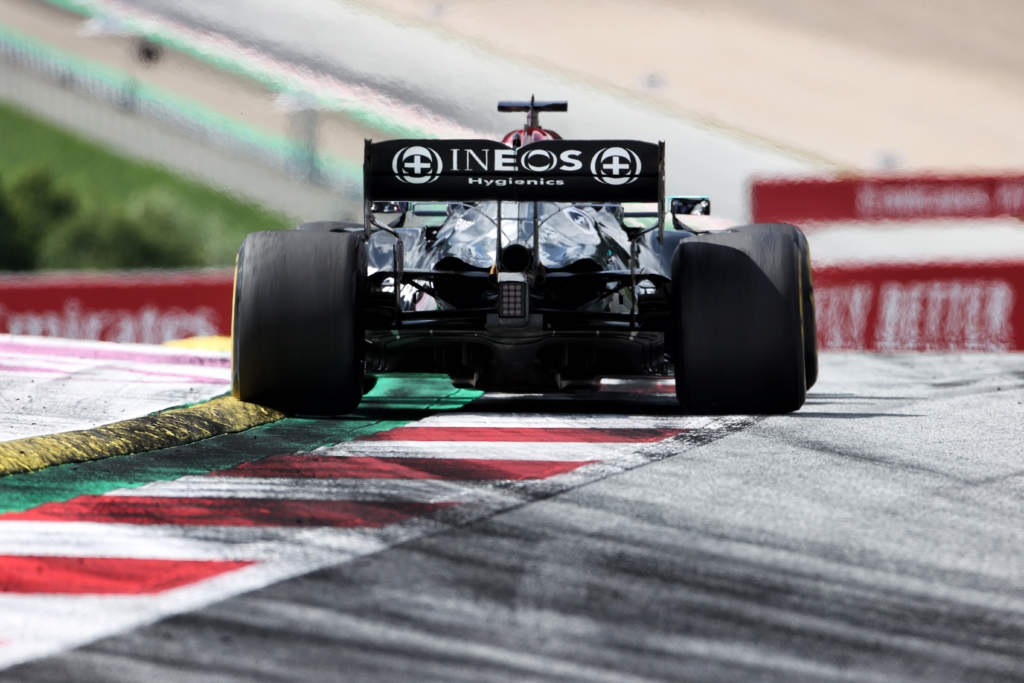
Even after his long delay behind Norris, Perez was again able to put himself in Hamilton’s window – ie Lewis couldn’t have pitted without coming out behind Perez. Which might have mattered had Hamilton ever been able to get within Verstappen’s undercut window. But he couldn’t. In fact it was Hamilton’s left-front which began to give out first, an ugly line of graining developing as the stint went on.
Perez was brought in on the 26th lap to fend off an undercut attempt by Bottas and that would ordinarily have been enough to secure him third. But a sticky left-rear on the Red Bull cost around 2.8s – and Mercedes used that to overcut Bottas ahead next lap.
“As soon as they pitted ahead of me I was able to go 1s quicker and the car felt amazing” :: Carlos Sainz
Red Bull later brought Checo in for a second stop in attempt at getting the place back. It was close – he got to within half-a-second on the line – but Bottas remained composed. Valtteri’s weekend had effectively been defined by that spin in the pitlane during practice and the three-grid-place penalty he got for it after qualifying second.
Norris was in superb form all weekend, qualifying the McLaren fourth (third after the Bottas penalty) and coming out on top of a fierce passing/repassing scrap with Perez for third on the opening lap.
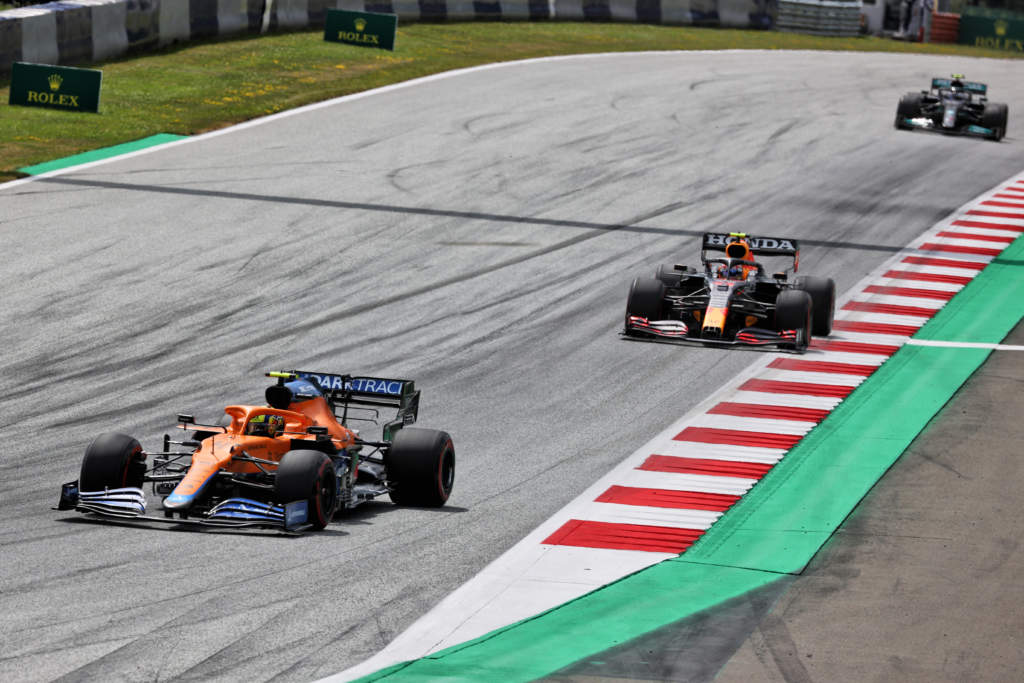
He held Perez and Bottas off only for as long as it wasn’t delaying his own race – which because of their tyre-conserving pace on heavy tanks was quite a long time. But when the time came, he let them past, minimising his delay.
Those vital seconds he didn’t waste were valuable later – as Carlos Sainz mounted a late challenge on his fifth place. He’d qualified the Ferrari outside the top 10 in 12th and so was able to start on the mediums and run long.
“There was a DRS train and I was a long way back in it,” he recalled, “and so I just concentrated on looking after my tyres. As soon as they pitted ahead of me I was able to go 1s quicker and the car felt amazing.”
Running a good hard pace like this, he ran until lap 41 and overcut pretty much the entire midfield. He emerged just behind Lance Stroll and after immediately passing the Aston Martin was ready to launch immediately into closing the gap to Norris, whose tyres were nine laps older than Sainz’s.
But there was a complication. Carlos had exited just ahead of the old-tyred Hamilton who was about to lap him and for whom he got blue flags, obliging him to let the Mercedes pass.
But Hamilton’s pace on 13-lap old tyres was significantly slower than Sainz could have gone on his fresh rubber. This allowed Norris to escape. By the time Mercedes had agreed to Hamilton’s request that he let the Ferrari past, Sainz had dropped too much time and Lando’s fifth place was safe.
But the Ferrari had shown ‘best of the rest’ pace, which was not the case in qualifying (Charles Leclerc and Sainz having qualified seventh and 12th respectively). The reason for this anomaly, especially compared to the McLaren, is the respective formats of each car’s rear wing. The McLaren’s has been designed to give a big DRS boost even at the expense of its effectiveness in non-DRS use. The Ferrari’s is the opposite.
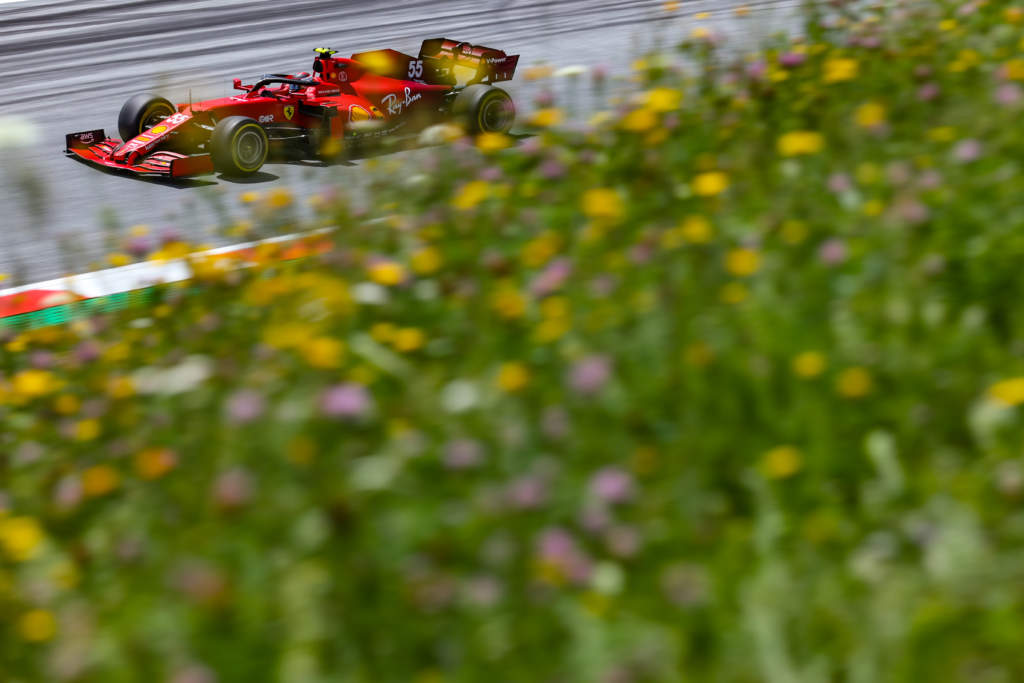
A qualifying lap around the Red Bull Ring has the highest proportion of DRS running of any track on the calendar (in excess of 30% of the lap). Hence the McLaren was flattered in qualifying relative to its race pace and the Ferrari the opposite.
“The team reacted well to the problems in France,” said Ferrari boss Mattia Binotto. “Everyone worked well together and here we had low deg, but we haven’t completely addressed the issue.” Ferrari is expecting Silverstone to be tough.
Leclerc followed Sainz home but his journey there was rather more dramatic. He had three separate contacts with Pierre Gasly by the time they approached Turn 3 on the opening lap, the second one puncturing the AlphaTauri’s rear tyre and plucking off Leclerc’s front wing flap.
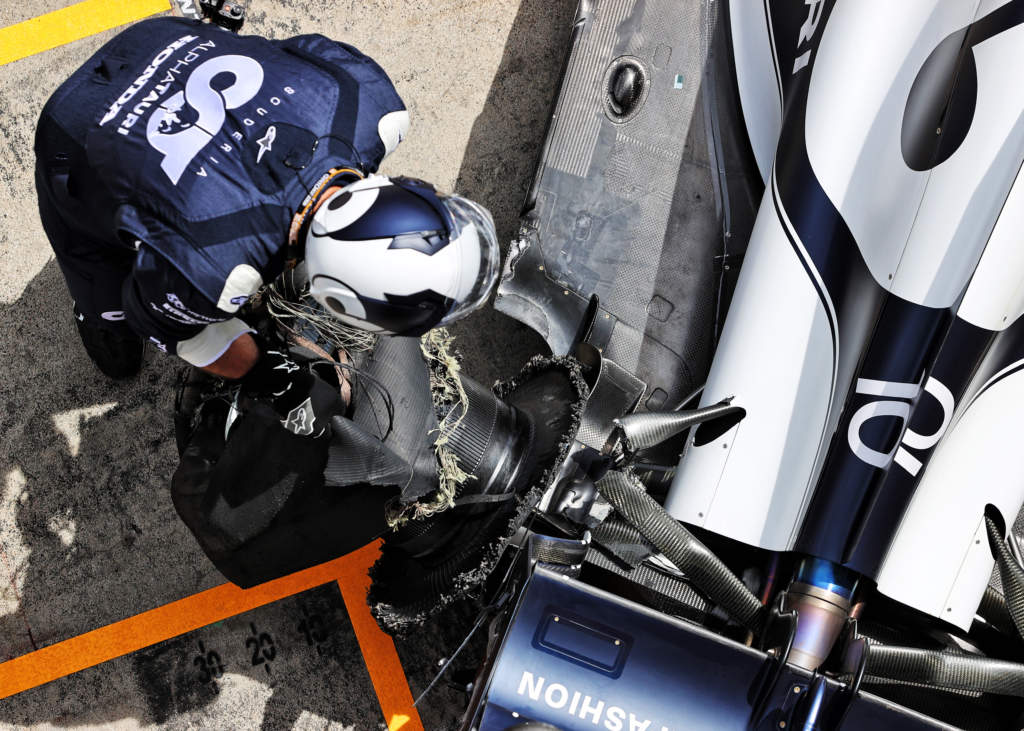
Gasly’s race was done after the punctured tyre wrecked the suspension, Leclerc was in the pits at the end of the lap for a new nose and a new set of hards. On these he ran long, pitting again halfway through the race to take a set of mediums and passing car after car – Esteban Ocon, Kimi Raikkonen, Sebastian Vettel, Yuki Tsunoda, Fernando Alonso, Stroll – in some very on-the-edge moves, not all of them without contact.
Stroll, Alonso and Tsunoda rounded out the points scorers, but George Russell would surely have been among them had the Williams not had to be retired with lack of pneumatic pressure.
He’d only just missed out on getting into Q3 and ran well up in the early eight-car DRS train that ran behind Perez/Bottas.
“We were in such a great position, P8, on the medium tyre,” said Russell. “We would have been able to pounce at the end and I think P7 was probably possible ahead of Alonso.”
The Williams is steadily improving and Russell is squeezing everything from it, so this was particularly galling for all concerned.
But a final word to the victor, and 18-point leader of the championship: “We do have a very good package but I want to see it again every single weekend because every track is different and it’s still about finding the perfect set-up on the car because it can be quite sensitive in some areas, to make it work and it’s never good enough.
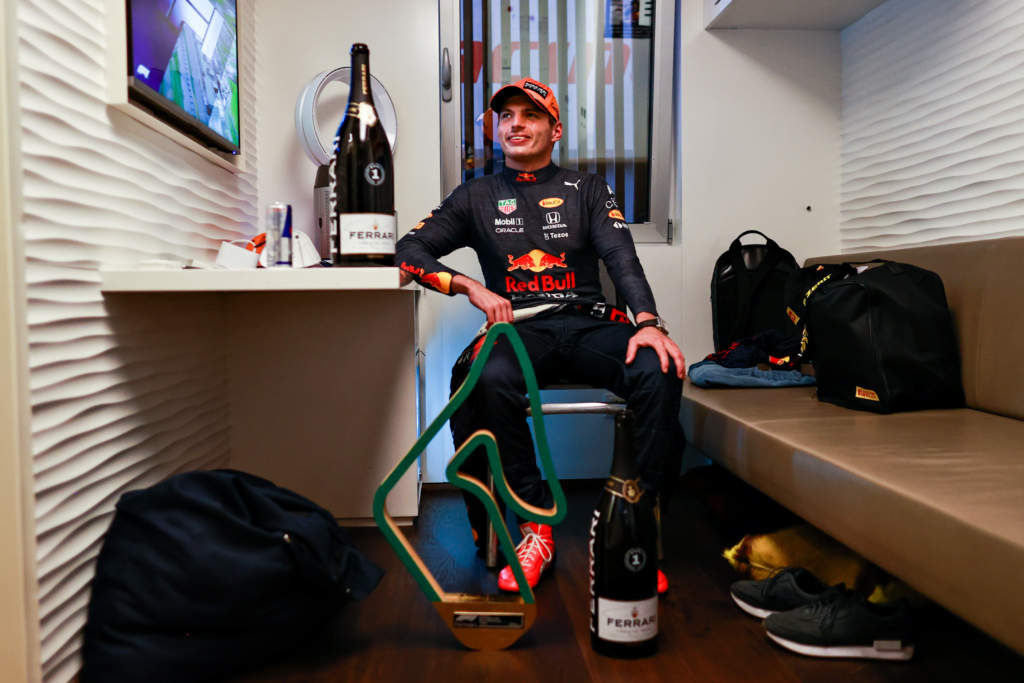
“So I always want to try and improve every single weekend because even a weekend like this, of course it looks amazing, we won with a big margin, but it’s never good enough.
“So we just try and look into details of what we can do better and when we go to other tracks again, I don’t expect it to be like it was today, so we have to just keep being very focused in what we have to do.”


